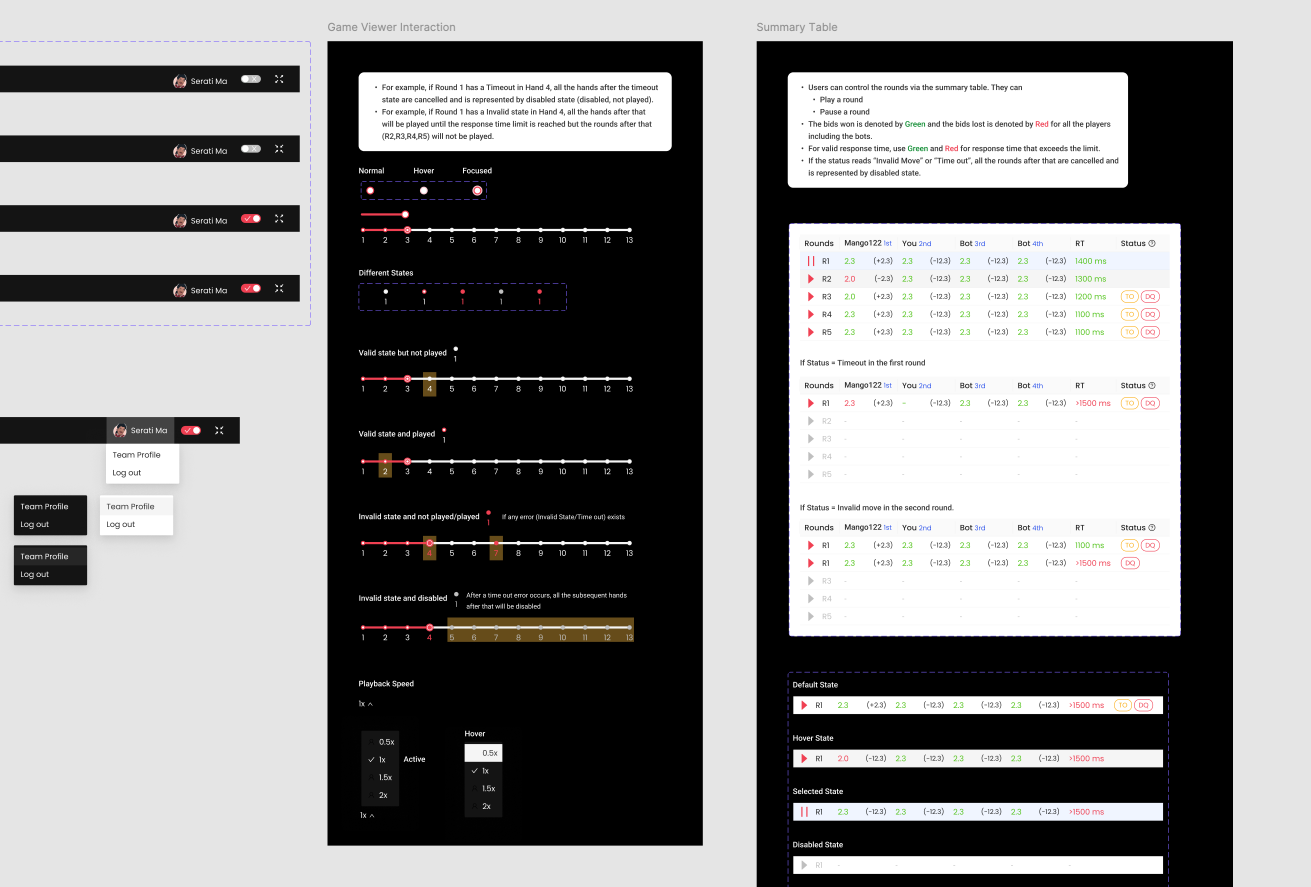Bhoos Games organized the SmartBots Coding Challenge, a four-month-long competition inviting developers and coding enthusiasts to build an AI bot for a card game. The challenge aimed at creating a platform for coders to meet, collaborate and share ideas in a fun and competitive environment.
We needed a way to keep the participants engaged throughout the competition.
We designed a dashboard that served as the central hub for the competition, providing an engaging experience to the participants.
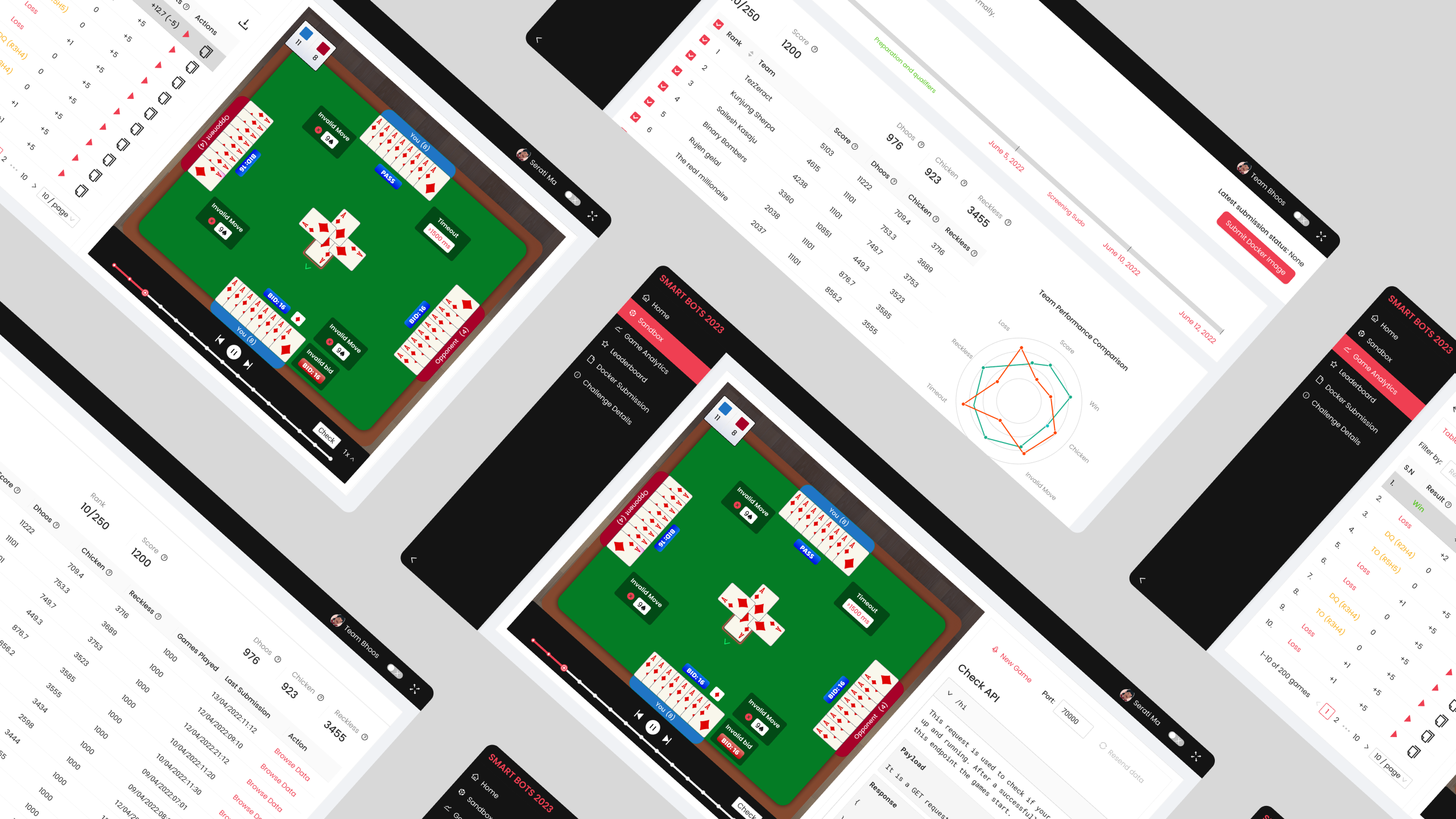
To make the challenge engaging for participants, the dashboard needed to address several key challenges:
We designed a dashboard to keep participants engaged in the 4-month long competition and enable them to improve their bots at every stage.
Dashboard Home allows participants to easily track and compare their performance with other competitors.
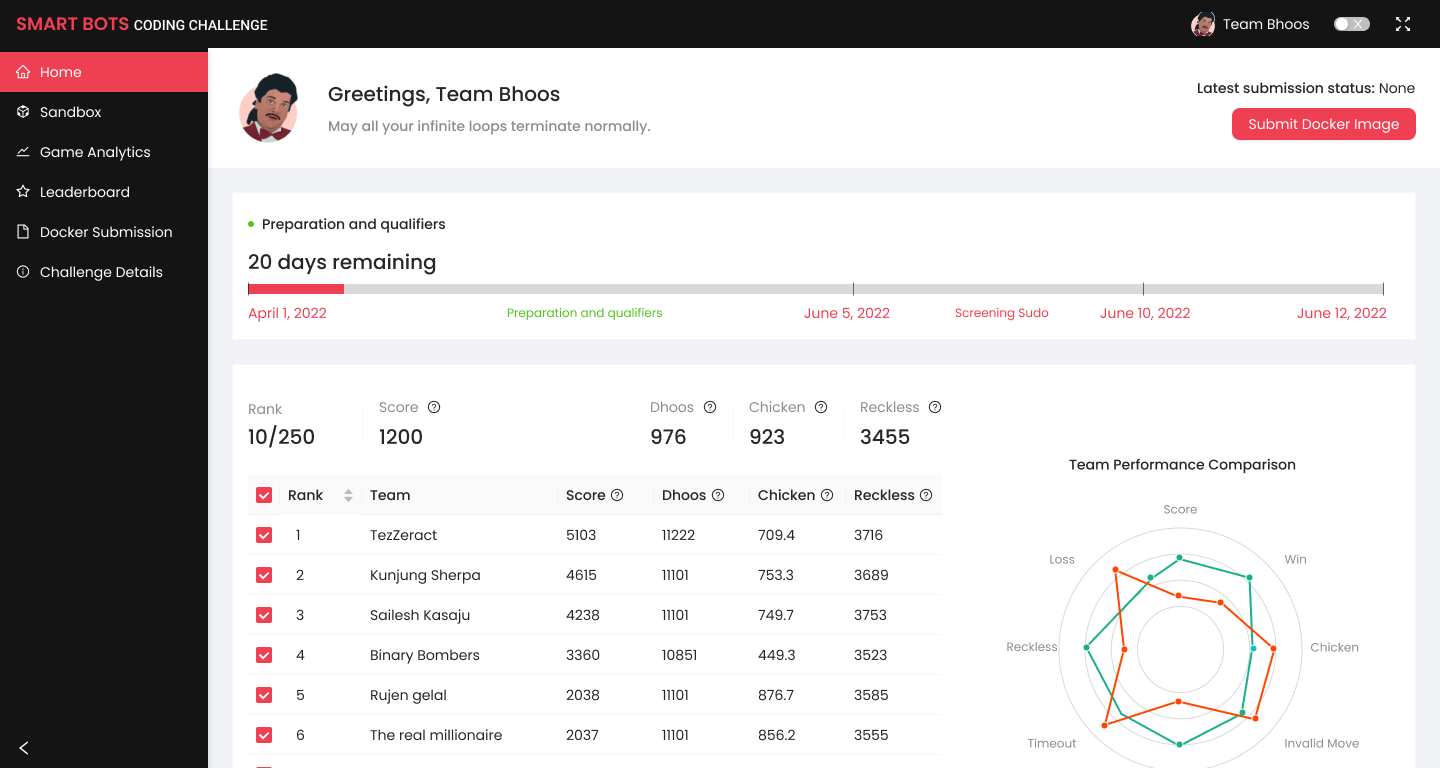
An intuitive analytics tab provides insights into bot performance across games, enabling participants to identify strengths and areas for improvement.
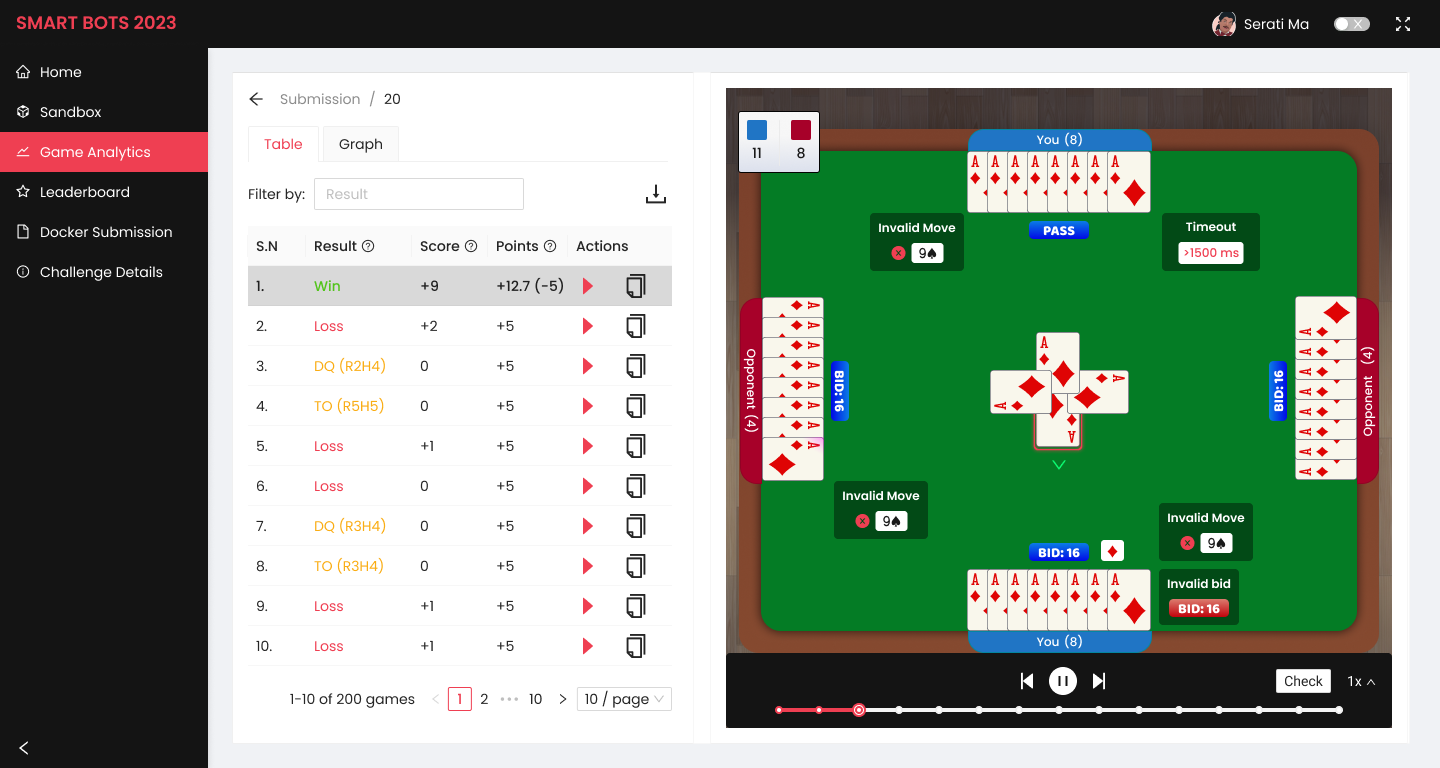
A Docker-based system ensures participants can submit and run their bot code safely on the server.
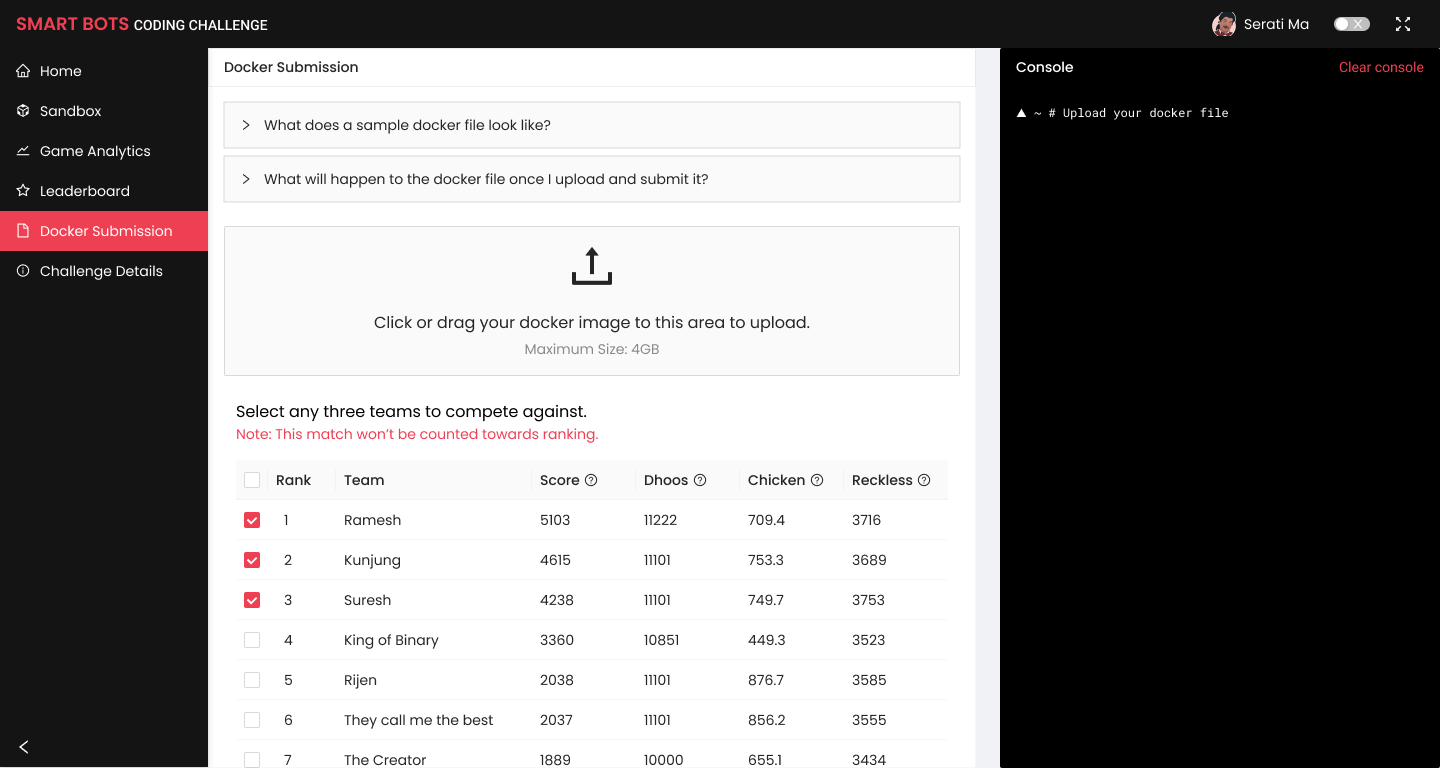
Sandbox enables participants to test and optimize their bots without impacting official rankings.
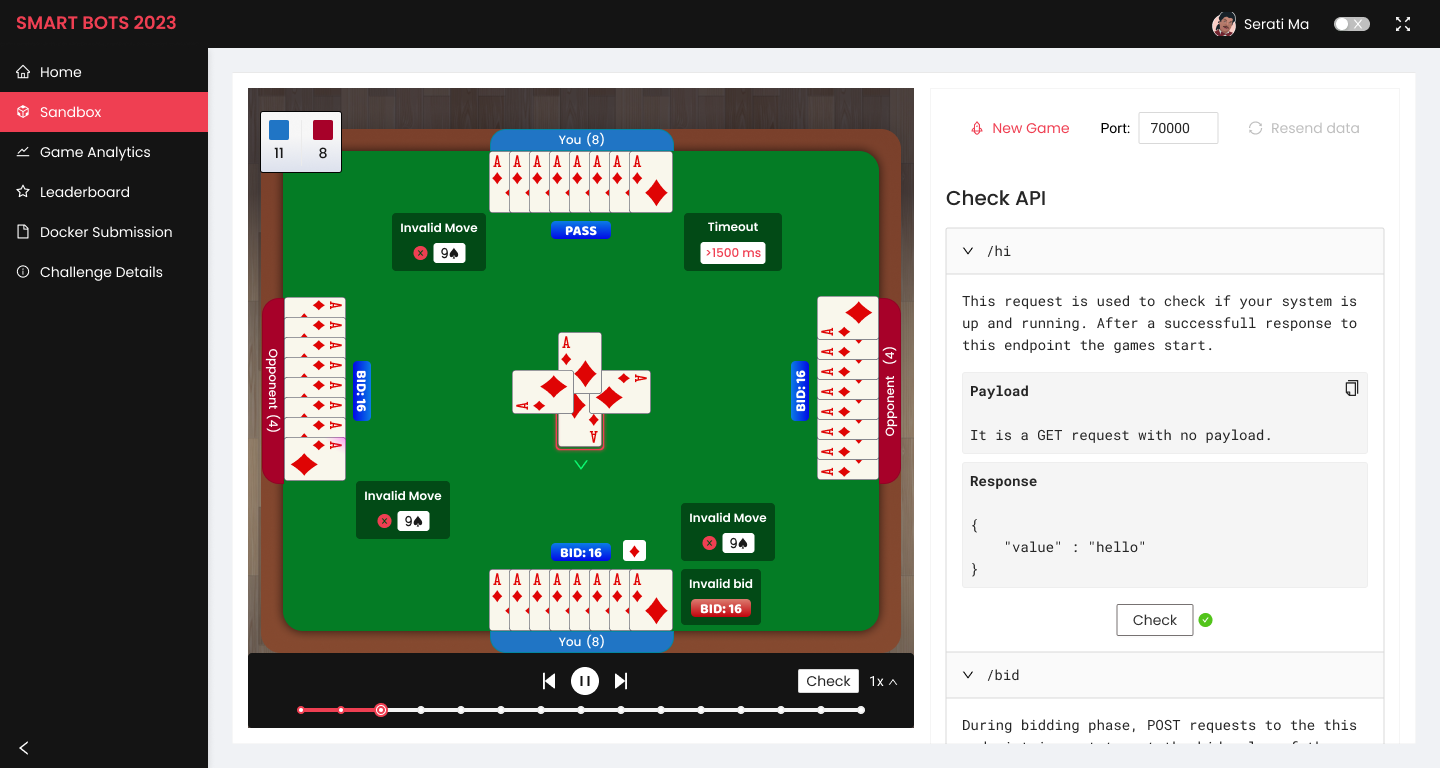
Leaderboard displays real-time rankings and detailed performance metrics to build the competitive energy.
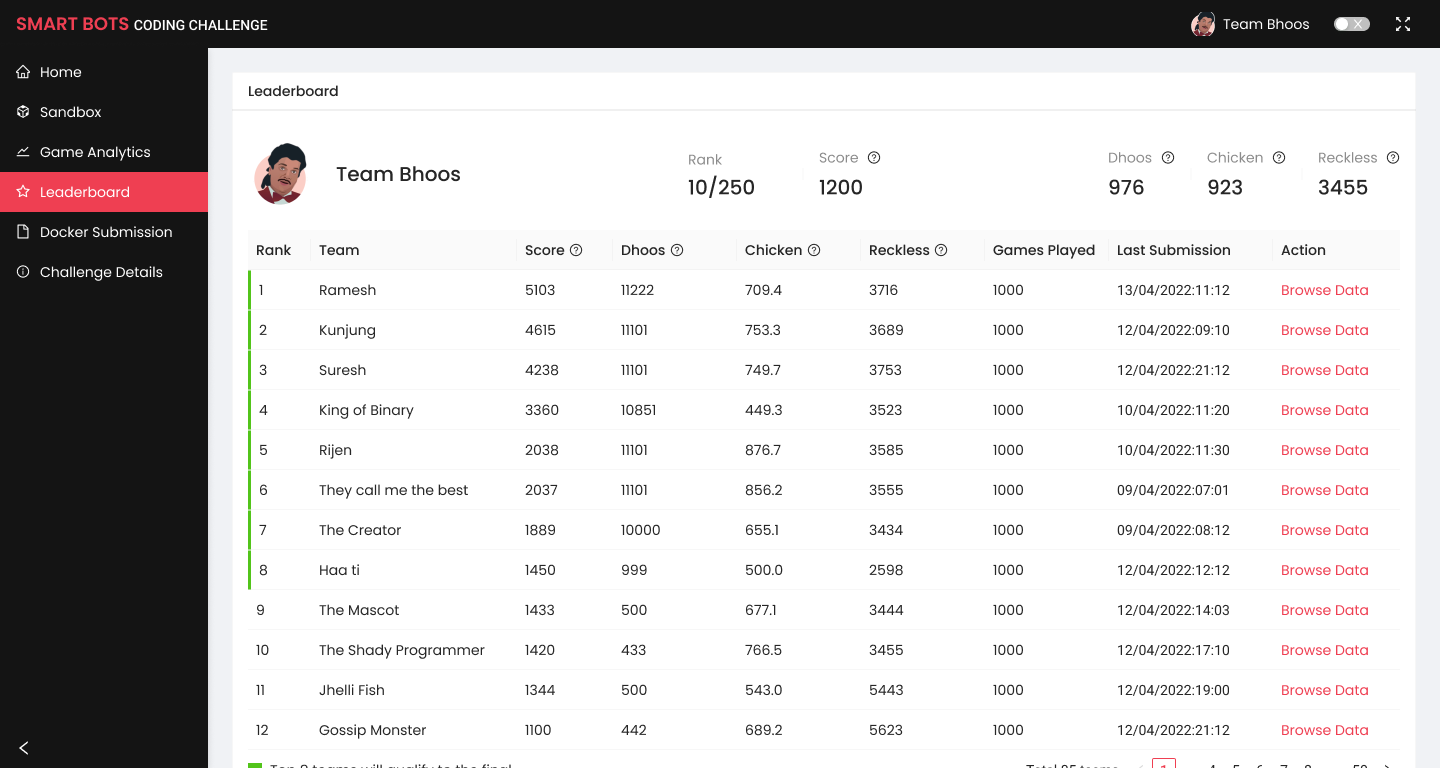
The dashboard played a crucial role in the success of the first SmartBots Coding Challenge. Although we didn’t collect separate analytics on dashboard usage, we observed consistent interaction from participants as they tracked their performance and rankings.
For the competition’s second year, the dashboard was reused with several refined features, resulting in significant engagement and participation:
Designing the dashboard was a collaborative and iterative process, focused on understanding developer needs, defining objectives, and refining features based on internal feedback.
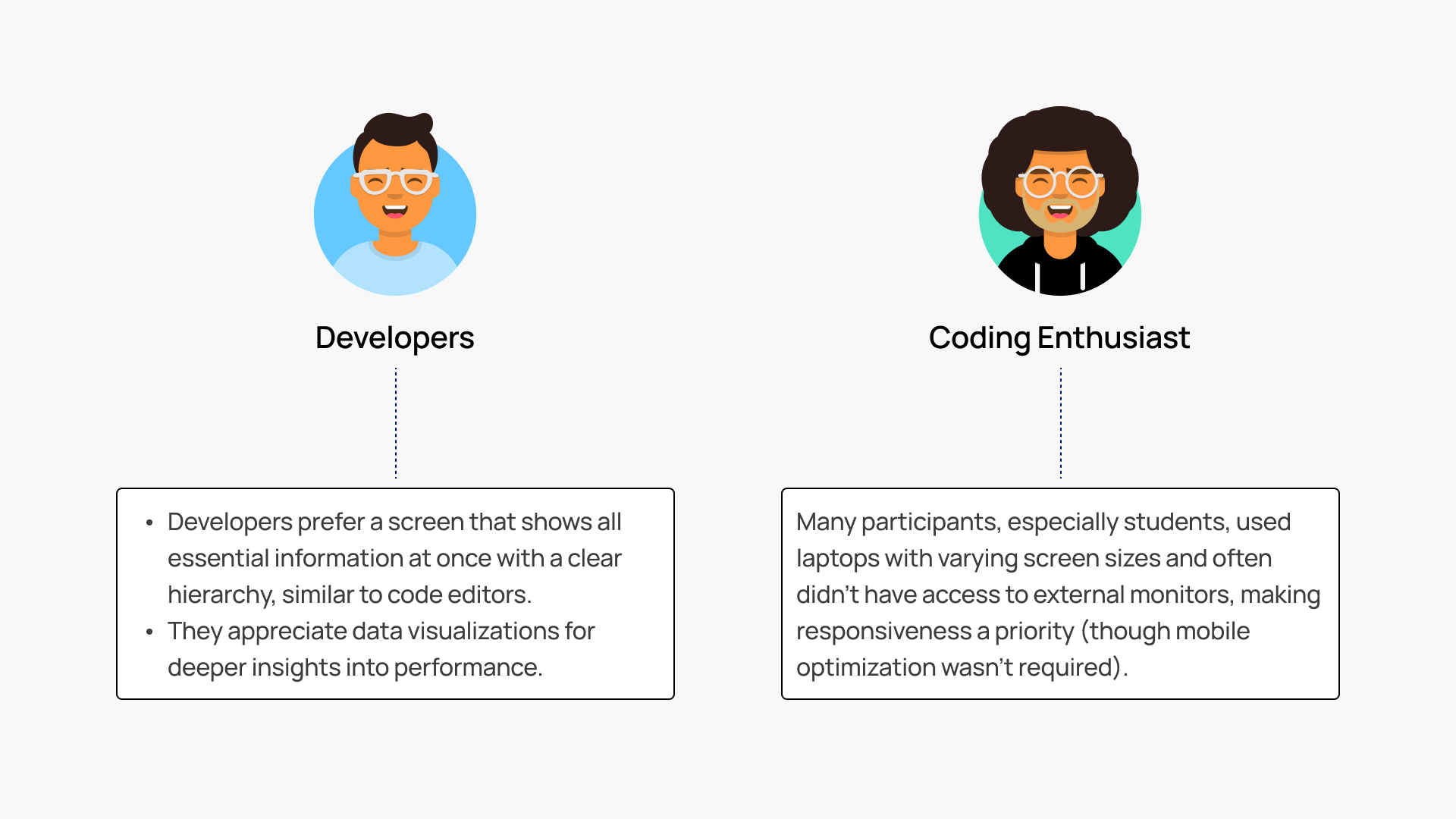
Objectives Defined:
The feature ideation process was iterative and heavily influenced by the technical team’s input. My role included:
